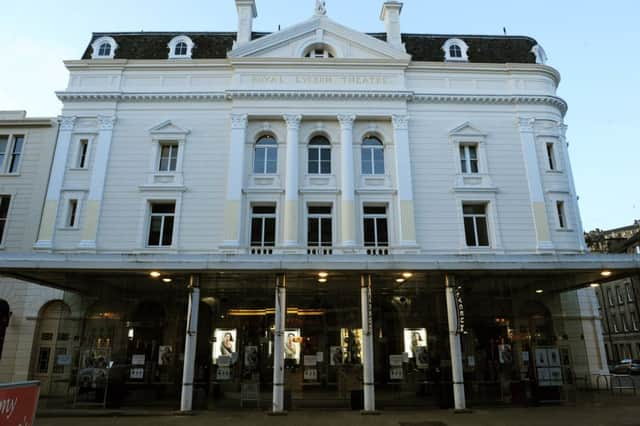Joyce McMillan: Ghosts of productions past


It’s late and dark on an October Friday evening, and I’m standing in a crowd of people at the top of a long, bleak staircase, looking down at the floor beneath my feet. Something about its texture catches my attention – very old boards, nailed into place 130 years ago, darkened by layers of dust, creaking slightly to our footsteps; and just for a moment, there’s a dizzy feeling of moving back in time.
The place is the top of the balcony stairs at the Royal Lyceum, where audiences once filed up to the “gods”, and still do, on occasions; and we’re there to experience a remarkable show called Hidden, put together by the Lyceum Youth Theatre as part of the company’s 50th birthday celebrations. Theatres have always offered backstage tours, of course, to audience members fascinated by the secrets of theatre production. In Scotland at the moment, you can buy or book a ticket for a backstage tour around the Citizens’, the King’s in Edinburgh, Pitlochry Festival Theatre, and many more; and they cater to a fascination with the mechanics of theatre, rather than its meaning, that I’ve always found vaguely irritating.
Advertisement
Hide AdHidden, though, is a show that takes that fascination further, into a dark and hugely imaginative exploration of the atmosphere that clings around the backstage areas of an old Victorian theatre like the Lyceum. Devised by a company of 60 young people and four directors – including artistic director Mark Thomson – the show leads us, over 65 minutes, through ranges of old dressing-rooms, down to the stage where fretful performers prepare for curtain-up, into the depths beneath the stage where strange children – or are they theatre mice? – play and rant in some kind of imprisonment, and then up those haunted back stairs to the gods, where competing deities fight for the soul of a boy who is strongly advised, in the end, to rely only on his own heart and creativity.
It’s a powerful show, which perhaps takes some inspiration from David Leddy’s unforgettable backstage promenade piece Sub Rosa, first seen at the Citizens’ in 2009; and it’s to be hoped that audiences will have a chance to see Hidden again, during the Lyceum’s anniversary year.
Yet in this Hallowe’en week, the show also raises questions about just why we see the backstage spaces of theatres as such spooky and ambiguous places; and why theatre history is so haunted by the figures of those who have died in the act of performance – like the renowned magician The Great Lafayette, burned to death at the Empire Theatre, Edinburgh (now the Festival Theatre) in 1911.
It’s as if we feel, somewhere, that the intensity of theatrical experience is a kind of devil’s bargain, which demands performers sacrifice something vital of themselves in order to create the spectacle on stage; so that backstage, after the show is over, all the regret and pain associated with that sacrifice – whether of family, respectability, wealth, peace of mind, or life itself – gathers and waits to claim the next generation of artists driven to live the same life.
And although, in 21st century theatre, that sacrifice is mercifully much less than it was – and most of our talk today is of artistic achievement, workable business plans, decent working conditions, health and safety, and the huge positive contribution a great theatre can make to the life of a community – perhaps this is the one week of the year when we can nod to the more mysterious side of the business: to its strange, brief intensities, to the roar of applause that seems to seep into the walls of an old theatre building, to the millions of dreams, hopes and yearnings that have flowed through its spaces over the decades; and to the ghosts that haunt the galleries and backstairs of every self-respecting theatre, brought to life in shows like Hidden, and then – in our age of reason – firmly sent back to sleep again, until the next All Hallows’ Eve.